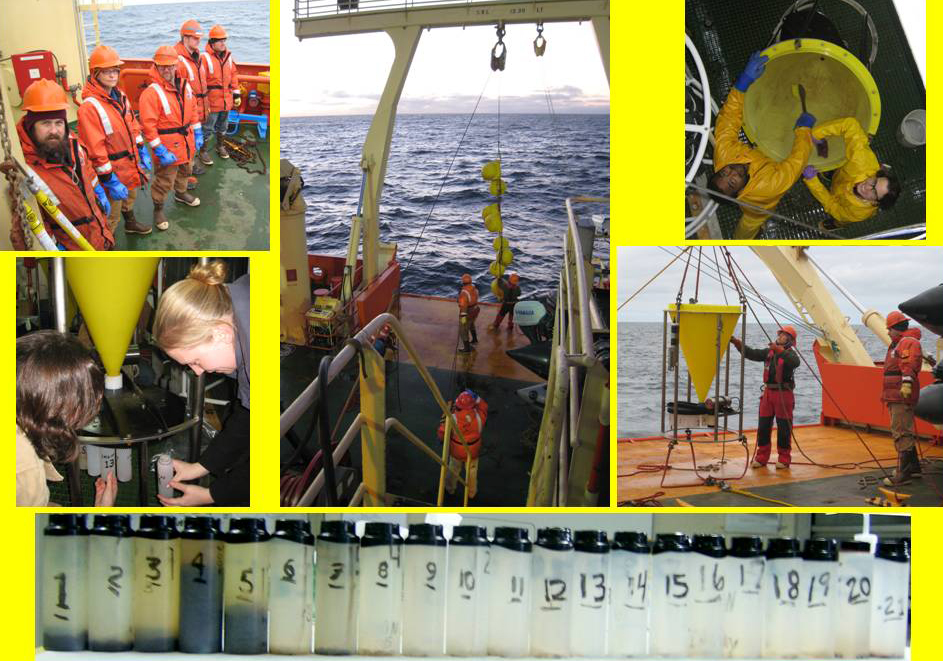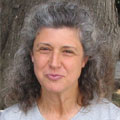Sediment Trap Recovery & Redeployment
Greetings Everyone!!
Thursday (January 10th) was a very busy and exciting day on board with the recovery and redeployment of the sediment trap, a key component of the Palmer LTER Microbial and Biogeochemistry Group (B045). A crew gathered atop the bridge of the Gould shortly after midnight to see who could first spot the 8 yellow floats come to the surface after the sediment trap was released acoustically – a coveted honor with a $50 prize attached! This year’s winner is Aaron Randolf! The yellow floats can been seen being brought on deck in the center picture below.

At center, Meghan King and Pete Dalferro bring the yellow floats aboard while a team of scientists including Chip Cotton, Heidi Geisz, Jeff Bechtel, Alex Lowe and Matthew Erickson anxiously wait to help on deck (top left). At middle left, Kristin Myers and Erin Morgan carefully remove and preserve the 21 particle-collecting sample cups. At top right, Erin and Aaron Randolf happily scrub down the trap– which accumulates plenty of grime after being in the ocean for a year. At middle right, Meghan King ensures a safe deployment of the newly cleaned trap, with Marine Projects Coordinator Andy Nunn looking on.
Nearly all the biological production in the ocean takes place in the upper, sunlit 100 meters, but the ocean is up to 4000 meters deep. The rest of this vast depth is nourished by the rain of particles falling from the productive surface layer. The particle rain, composed of the dead cells and carcasses of marine life and their waste products, constitutes the principal connection between the surface and deep sea. The sedimenting particles transport carbon to depth, where it is isolated from the atmosphere for about 1000 years until ocean currents bring it back to the surface again. The transport of carbon to the deep sea is called the biological pump and is responsible for setting the level of carbon dioxide (CO2) in the atmosphere – or was, until human activities disrupted the carbon cycle 200 years ago.
Oceanographers measure the particle rain with sediment traps – essentially particle rain gauges moored to the ocean bottom. Palmer LTER maintains such a trap in the middle of the continental shelf to monitor the particle rain at a depth of 150 meters, just catching the sedimentation as it leaves the surface. Our trap has a turntable with 21 sample cups to collect particles over the full year between our cruises, which are being carefully removed and preserved. In polar oceans the particles mostly come down in a brief pulse instead of being spread evenly throughout the year. The row of cups in the photo clearly shows the seasonal pulse, which is triggered by the retreat of sea ice in the Austral spring (October/November). Although our cruise just covers a 30-day period each January, the trap operates over the full year, giving us one of the few continuous records of ocean metabolism. It has been deployed and recovered successfully every year since 1993, one of the longest time series of particle flux anywhere.
The recovered mooring must be scrubbed clean and this joy is given to the youngest new members of the B045 team. After the equipment is checked over and ready, a clean trap is deployed from deck.

 No comments
No comments 






